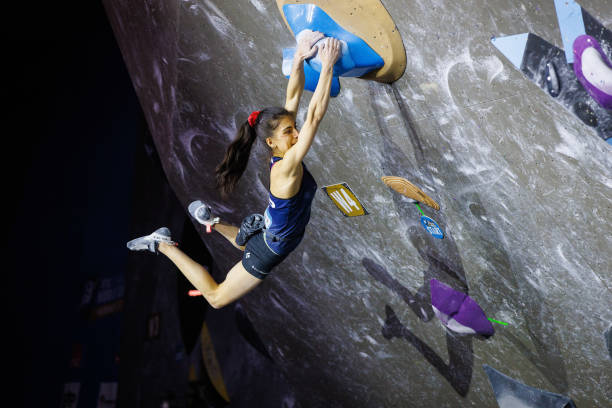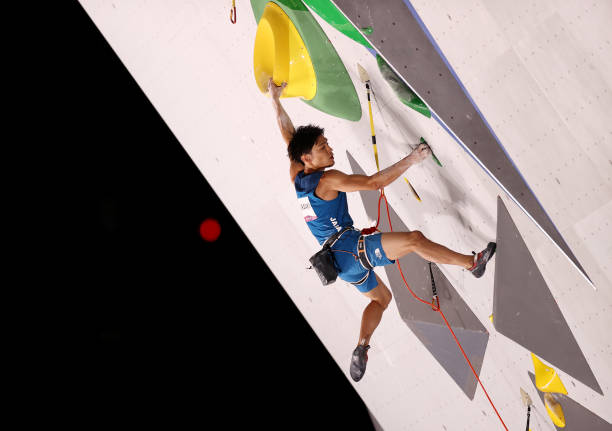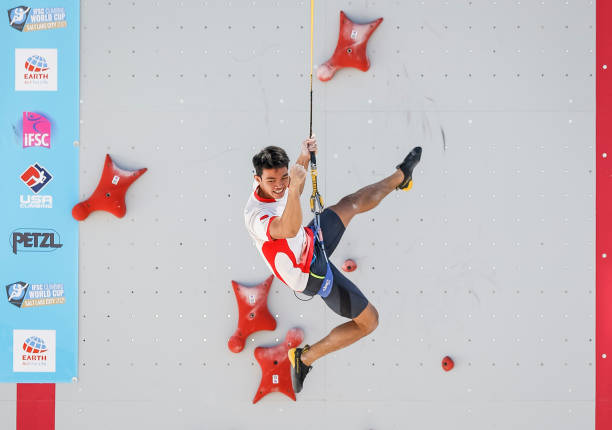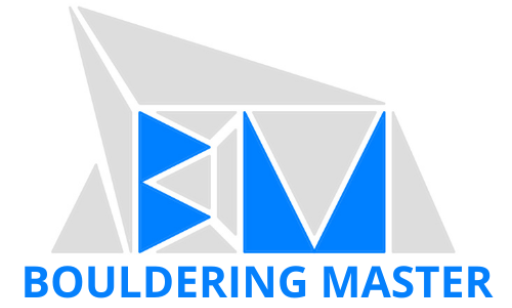
Table of Contents
What is Sport Climbing?
High-intensity pre-placed bolted lead climbing is known as sport climbing. Yet, competitive climbing is also known as “sport climbing”. This can be very confusing and it is important to be able to differentiate between the two.
What are the three disciplines of sport climbing?
Competitive climbing, also known as sport climbing, incorporates three formats: bouldering, lead climbing, and speed climbing. All sport climbing disciplines require different skill sets and are scored differently, but they all share the same objective of reaching the top.
Bouldering

Is bouldering sport climbing? Bouldering is not sport climbing (or pre-bolted lead climbing), but it is one of the sport climbing disciplines of competitive climbing.
Throw out the ropes and bring in the safety mats. This discipline requires climbers to use power and technique to solve 4 to 5 routes (bouldering problems) within a set time restriction without the use of a rope. The aim is to solve the most bouldering problems with the least amount of attempts. Essentially, only two holds count in competitive bouldering:
Top (T): This is the last hold in a bouldering problem and must be held with both hands securely for a few seconds or generally when the judges give confirmation.
Zone (z): This is a marked hold located mid-problem, which is determined by the routesetters. A climber is considered to achieve the zone if he or she shows “control” of the hold by having one hand on it and using it to move to the next boulder. Competitors can also be rewarded the zone point if the climber skips the zone altogether, but still completes the problem. This is a risky move because if the top is not reached the climber risks not receiving the zone point and the attempt is then marked as an “attempt to zone”.
Attempt to top and attempt to zone are both calculated in the competitor’s final score. Essentially, the final score will look like this:
(# of tops) T (# of zones) z (# of attempts to top) (# of attempts to zone)
(i.e. 4 tops, 4 zones, 5 attempts to top, 7 attempts to zone = 4T4z 5 7)
Notable boulder climbers to look out for in 2025
- Japan’s Miho Nonaka
- USA’s Brooke Raboutou
- France’s Mejdi Schalck
Lead Climbing

Is sport climbing, the same as lead climbing? In competitive climbing, the sport climbing discipline “lead climbing” refers to when competitors use endurance, strategy, and skill to climb an unfamiliar route as far as possible – with the main objective of reaching the top within 6 minutes. Athletes one-by-one scale a 15m wall using a safety rope that is clipped into pre-placed quickdraws to protect the climber in the event they fall. Climbers gain points based on the height (hold number) reached, with a “+” added to their score if they successfully had a “controlled” hold and were trying to reach the next hold.
(i.e. a secured hold on 40 while reaching for hold 41 would earn the climber a score of 40+)
In the event of a tie for both bouldering and lead climbing, climbers will be separated by their results from the previous round. So, it can be very beneficial to be ranked the highest in each round.
Notable lead climbers to look out for in 2025
- Slovenia’s Janja Garnbret
- Slovenia’s Luka Potočar
- Japan’s Ai Mori
Speed Climbing

Using athleticism and power as climbers race against the clock. Speed climbing is exactly like it sounds, a race to the top of a 15m wall as fast as possible. Two climbers compete side-by-side on identical routes to be the fastest to reach the top. The qualifying round is a race against the clock. The fastest 16 climbers from the qualifying rounds advance to the final rounds where they compete head-to-head in a knockout system. The final round is a race against the climber competing against you. Win all the duels and win the competition!
Notable boulder climbers to look out for in 2025
- Poland’s Aleksandra Miroslaw
- Indonesia’s Veddriq Leonardo
- Poland’s sisters Natalia Kalucka and Aleksandra Kalucka
For more climbers check out Professional Climbers List
Combined Format
The Boulder and Lead combined format was first introduced by the IFSC at the 2022 European Championships in Munich, Germany. The push to create a combined format was due to the increasing demand to create a combined format that was suitable for the Olympic games. The 2024 Paris Olympic games was the first Olympics to showcase this combined format of lead and boulder.
The winners of the event are based on a combined score of the points accumulated from bouldering and lead climbing. The maximum score is 200 with 100 points from bouldering and 100 points from lead climbing. Bouldering consists of 4 bouldering problems, each offering a maximum of 25 points. The Top (25 points), Highest Zone (10 points), and Lowest Zone (5 points). Lead climbing consists of only the top 40 moves being scored. Holds are worth more points higher up the wall with a maximum total of 100 points for reaching the top of the wall.
Paraclimbing
Paraclimbing is a relatively new addition to sport climbing. It is lead, speed, and boulder climbing for those with disabilities. Athletes are categorized based off of their disability to create a more fair and balanced competition among competitors. For example, an athlete with impaired leg mobility would not be paired with an athlete that is deaf. The International Federation for Sport Climbing (IFSC) has been dedicated to the mission of making climbing more accessible to everyone regardless of their ability or disability.
Sport Climbing Competitions
These sport climbing disciplines are hosted at the local, regional, national, and international (IFSC) levels. Each competition will host either one, two, or all of the sport climbing disciplines. For example, the sport climbing disciplines are combined into one event at the 2020 Tokyo Olympic Games. For information about the latest events, click on the button below.
